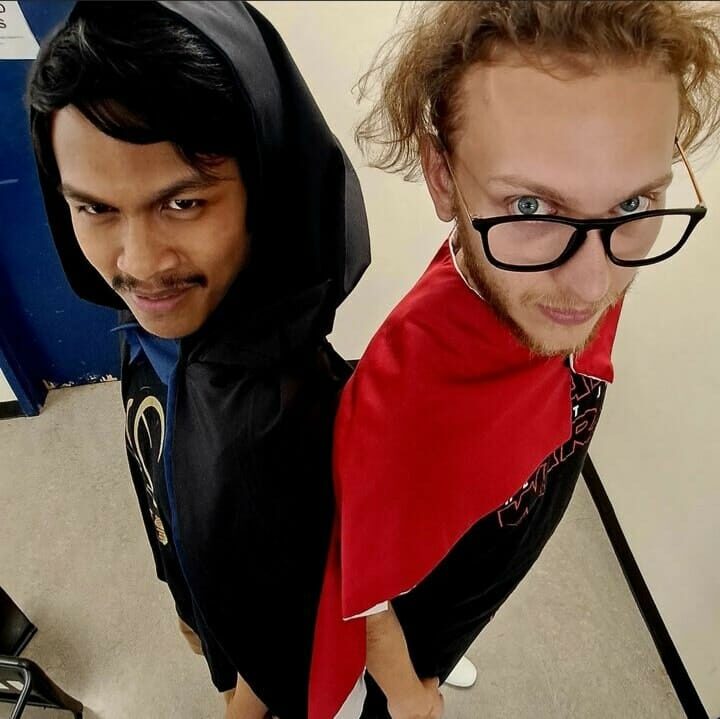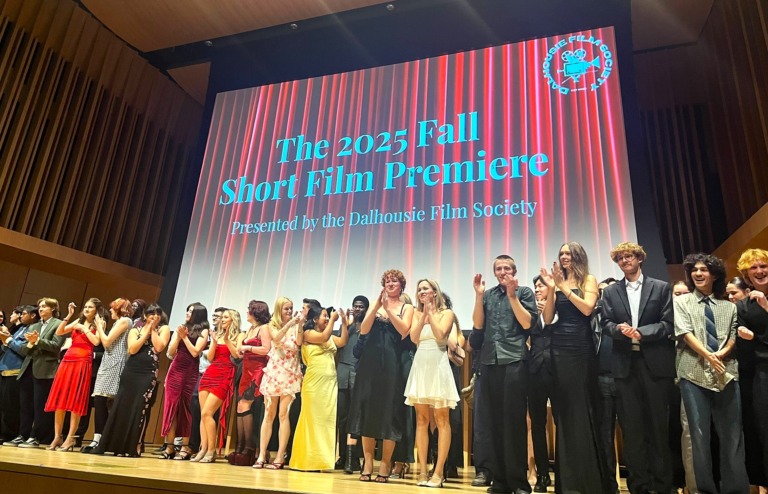
Review – Issued in Color
An exploration into the intersection of art and racism
The halls of Neptune Theatre buzz with the excitement of a show just let out, and the anticipation of people waiting to take their seats. This kind of energy is unique to the final weekend of the Halifax Fringe Festival.
From the conversations outside the doors of Neptune’s Imperial Room, the audience appears to be made up of mostly artists. This is the perfect setting to discuss art and the issues that come with ensuring it is accessible and respectful for all.
Issued in Color, written and performed by Riley Reid and Neo Ragsac, is advertised as a show about “Racism in art. How we talk about it … and ignore it.”
The programs in everyone’s hands are, ironically, not issued in colour. The black and white comic book style design surrounds descriptions of the play’s creators, whose biographies express their shared goal of inclusion in the arts.
Ragsac’s bio states, “I hope our show can help you see the world through a different lens. Whether or not you come from different cultures, you will always find commonality.”
The purple lights dim, and the voices of Joseph (Reid) and Carlo (Ragsac) fill the room as Carlo’s superhero, Falconet, steps onto stage.
What follows is a charming play about art, friendship and the harm that ignorance can cause to both.
Issued in Color depicts friends Joseph and Carlo as they struggle to complete their comic book in time to submit to one of the best publishers in the country. Tensions rise when they decide their characters, Pandion and The Falconet, should work together to defeat their latest villain.
Their opposing ideas of how the story should unfold cause them to argue, and their cultural differences seem to be the root of the problem. Neither one understands, or is willing to understand, where the other is coming from.
The argument escalates as insults are hurled, many laced with unkind stereotypes and ignorant points of view. Their cultures and art insulted, the two go their separate ways, only to realize they can’t write this story alone.
The show is surprisingly tech heavy, with well-executed sound effects that heighten the story. Although some beats turn awkward, and excessive hand gestures are frequent enough to be distracting, the enthusiasm onstage is palpable. The actors do well to communicate the naivety of the characters, while also reciting the mouthfuls of complex dialogue to narrate the comic book action.
The show never takes itself too seriously, eliciting many laughs from the audience as they poke fun at common superhero tropes and the ridiculousness of their own characters.
Turning serious when required, the play doesn’t stray from the underlying message of the need for inclusion in the arts and beyond.
The characters’ conversations point out the lack of action taken on issues surrounding racism and poverty, anti-immigration and the history of Canada’s residential schools. They remind the audience acknowledging these issues is not enough. People must work together to make active change if they want to see a difference in the world.
After their bows, Reid and Ragsac, still beaming from the rush of the show, share some thoughts.
“We make a lot of art together, me and Neo, and it’s always been super important for us to be conscious of how we create art with each other, as people who come from very different backgrounds,” said Reid. “There is so much more that you can think of critically, when thinking about how you speak about race, and how you speak about other people’s culture. Simply understanding the basics, or only what you think you know about another person’s culture, is never enough. There is always more to learn.”
Ragsac chimed in on this sentiment.
“There is also more to people than just their identity. You’re also defined by how you act and how you respect other people. If everyone is more conscious of that, the world could be a better place.”






